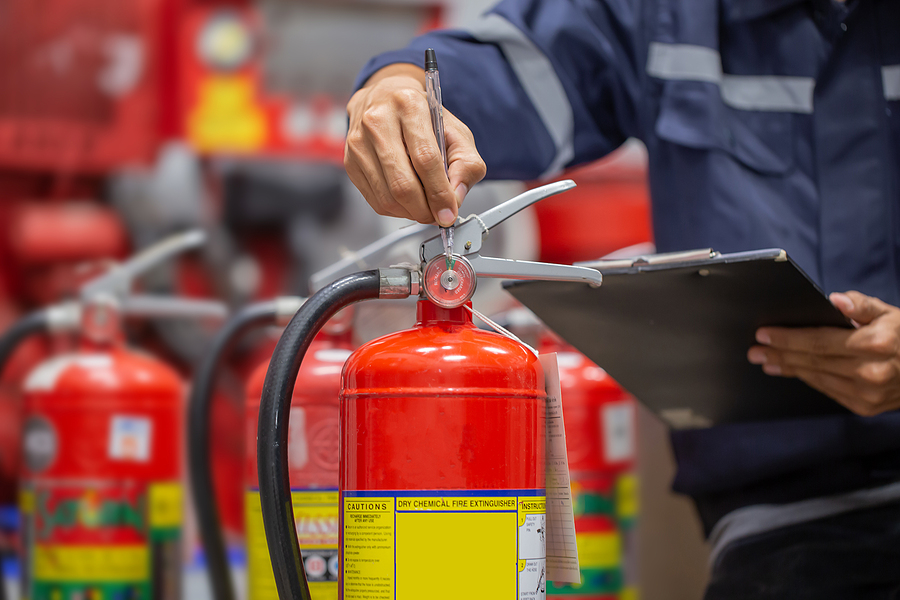Both civilian and military firefighters have used a type of foam known as AFFF (Aqueous Film-Forming Foam) to extinguish flames. They used AFFF in training exercises, as well as in fighting actual fires. But the chemicals in AFFF have been found to be harmful to human health. If you have suffered cancer or another life-threatening illness, you may be able to file a firefighting foam lawsuit.
The attorneys with the McEwen Law Firm are accepting cases from those who have suffered harm from AFFF simply by doing their job – helping to save lives across the country. Our firm has a history of taking on huge corporations and winning. We’re ready to do the same for you. Please give us a call at (800) 732-3070 or contact us online for a free review of your case.
What is Firefighting Foam?
AFFF puts out fires that are too formidable for water alone. It basically acts as sort of a blanket, smothering the flames. The chemicals that makeup AFFF include perfluoroalkyl and polyfluoroalkyl substances (PFAS), which help the foam extinguish fires faster than other products. But PFAS has also been associated with severe health risks.
This is very important when it comes to fires that occur in particularly volatile environments, such as military ships and airplanes. When a fire breaks out in this kind of setting, it can hit fuel and ammunition, leading to a potentially catastrophic series of explosions. AFFF acts quickly, robbing the flames of the oxygen they need. Unfortunately, the only type of AFFF that is effective in quickly dousing flames contains PFAS.
Risks Associated with Firefighting Foam
Although PFAS can help put out fires in dangerous environments, they’re also dangerous to anyone who is exposed to them. They have been shown to increase the risk of cancer in people who are exposed to them for an extended period of time.
Who’s at Risk?
Most of those considering a firefighting foam lawsuit were exposed to high concentrations of AFFF through their work. They suffer from severe health issues, and many of them are taking legal action because they weren’t warned about the possible dangers of using the foam. They received thorough training in how to use AFFF, but no one told them how doing so could eventually cause them a great deal of harm.
Navy workers started using AFFF all the way back in the 1960s, not only to put out fires but also in numerous training exercises that showed them how to extinguish flames quickly. But airport workers were exposed as well, specifically first responders who put out fires, as well as others who helped with cleanup once the fires were put out.
Evidence Used to Determine Eligibility
If you’re going to file a firefighting foam lawsuit, you’re obviously going to need evidence to back up your case. Here are a few pieces of evidence your attorney can help you gather.
- Medical records – If you’ve been diagnosed with cancer or another disease linked to PFAS exposure, your medical records will provide the details of that diagnosis.
- Medical expenses – Your medical bills will also provide insight into what type of treatment you had to undergo due to your PFAS-related illness. Try to keep as many bills as you can, including those for your treatments, doctor visits, any procedures that were performed, and others. If you have to use special equipment related to your illness or you require in-home care, keep those bills as well.
- Evidence of exposure – Your attorney will help you obtain any employment records that could indicate you were in an environment where PFAS exposure could have occurred. This could include records of your time working as a firefighter, an airport employee, or your military experience. This will not only show that you suffered exposure, it will also provide context to the level of that exposure.
Is Filing a Firefighting Foam Lawsuit Worth it?
There’s little chance you’ll be suing your old fire department, your employer, or any branch of the military. There’s little evidence to show that any employers were aware of the dangers of AFFF use.
In most instances, you’ll be filing a lawsuit against the companies that produced AFFF instead. There is strong proof that these companies knew about the dangers associated with fire suppression foam. They also knew about those dangers for decades. Even though they were fully aware of the potential problems, they chose to keep that information to themselves. They didn’t even bother to tell the people who put their lives on the line.
What Damages Can You Recover?
If you’ve developed an illness after exposure to PFAS in AFFF, you’ve no doubt accumulated a lot of medical bills. You’ve also suffered other types of financial losses. Damages are the losses you incur because of your accident, monetary or not.
These are just a few common examples.
- Medical expenses – Many patients with cancer have to endure several different surgical procedures. They also may have to stay in the hospital for an extended period of time. The bills that result from their treatment can be astronomical, easily reaching tens of thousands of dollars.
- Lost wages – While some patients are only away from work for a short time, others can’t work at all. The longer their battle with their disease, the more work they’ll have to miss. The more money they’ll lose in the process.
- Pain and suffering – Cancer treatments can be excruciating. The disease itself can also rob a patient of their ability to pursue the activities they love. This can lead to depression and other mental health issues.
Contact McEwen Law Firm to Learn More
A skilled attorney with McEwen Law Firm will work passionately on your behalf to help you recover these and any other damages you’ve suffered. Schedule a consultation for free by contacting us online or calling (800) 732-3070.
